Stream Deck for Podcasts: Speed up Your Workflow (& Avoid RSI!)
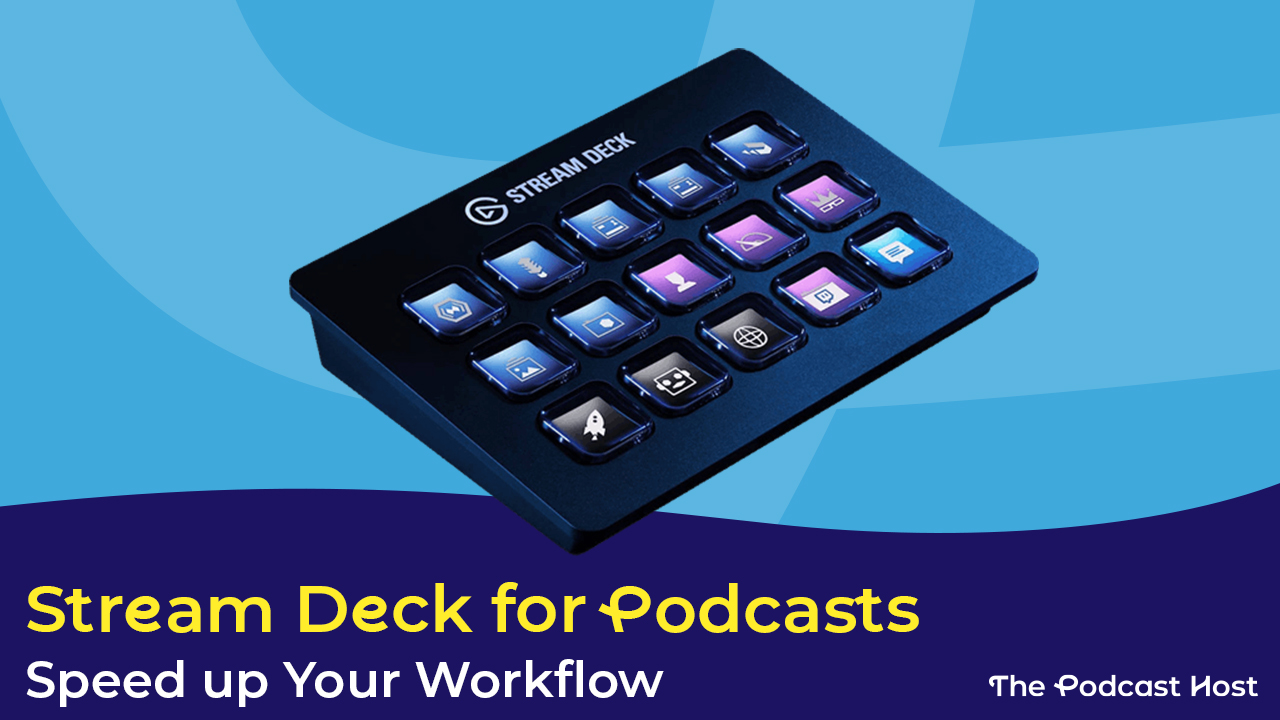
When most people think of a Stream Deck from Elgato, the first thing that comes to mind is, “well, that’s for streamers”. This may have been true at one point. But the Stream Deck has been widely adopted by audio editors to speed up editing time and other in-DAW tasks. It can also help protect you from Repetitive Motion Disorder (RMD) or Repetitive Strain Injury (RSI). In our technology age, RSI has become a severe issue that you should be aware of to protect yourself. One such tool we can use in the fight against RMD/RSI (and to help speed up our podcast workflow!) is the Stream Deck.
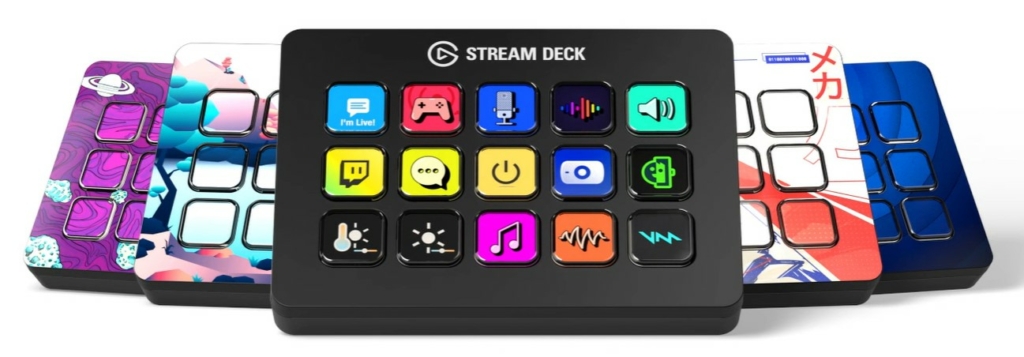
What is a Stream Deck?
Not come across the Stream Deck before? Here’s a quick rundown of what it is and does.
The Stream Deck is a physical device with buttons. How many buttons depends on the model. Each button can be assigned a hotkey command (ctrl+C, for example), a series of hotkeys, or a plethora of other tasks. You can make multiple profiles for different software, which the Stream Deck will automatically switch to when opened.

Editor’s Note
This post uses affiliate links to products we think you’ll find interesting and useful. We’d earn a small commission, should you choose to buy through them, though never at any extra cost to yourself. Affiliate income helps support all of the free content we create for you!
These buttons are assigned in software of the same name. Its UI is drag and drop – making it super easy to work with!
So now that we know what a Stream Deck is, let’s kick on and find out how (and why) we can use one for our podcasts.
In this article, I will:
- give a brief explanation of RMD/RSI from a registered physiotherapist.
- describe how the Stream Deck can help you as an editor.
- provide some configuration considerations for a Stream Deck.
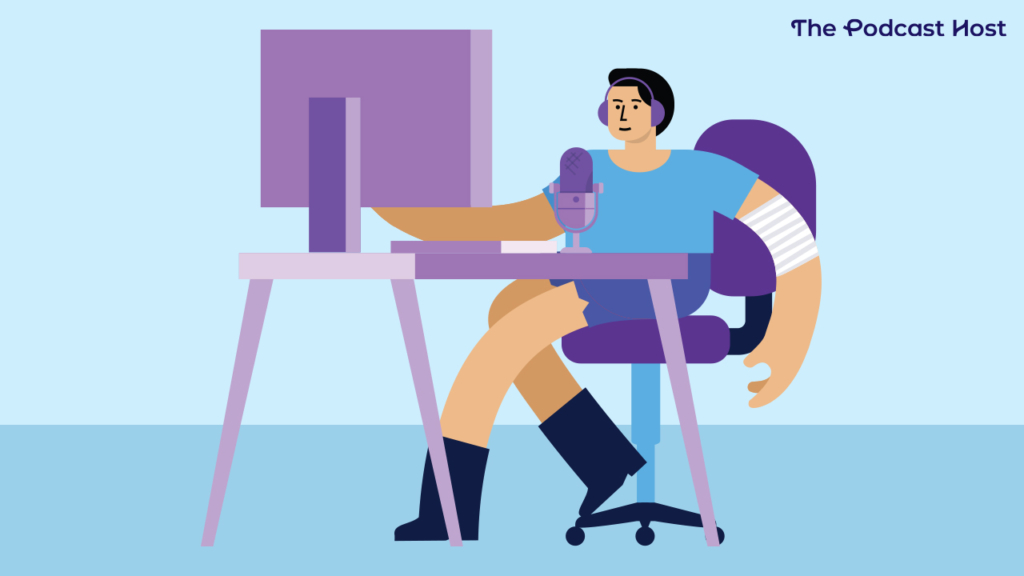
What is Repetitive Strain Injury?
First off, I would like to state that I am not a medical professional, and the following is me paraphrasing from a local physiotherapist I talked to about RSI.
So, what is RSI, and how does it happen? In a nutshell, RSI occurs when we use repetitive motions for extended periods, like clicking a computer mouse, trackpad, and keyboard usage. Basically, any action that you do over and over again over extended periods can trigger this. Even cell phone usage!
And what does RSI do to the affected area? Again, in a nutshell, it can cause tendons to be overworked. This causes inflammation, which can thicken and lead to scar tissue creation. This creates even more inflammation and results in pain.
Bottom line? RSI is something we want to steer clear of at all costs, so any tools that can help us make smarter movements when podcasting is worth our consideration. The Stream Deck is one of those tools.
How Can Using a Stream Deck Help You Work on a Podcast Faster
The Stream Deck from Elgato is highly customizable, and it’s not just single hotkeys that are programmable! A user can program a series of several hotkeys strung together into a single button rather than inputting each hotkey one at a time. Additionally, you can program other functions from multiple software (more on this later).
The Stream Deck embraces the saying, “work smarter, not harder”. You may think manually inputting hot/quick keys doesn’t take up much time, but these micro-movements can really add up!
Thinking About Efficiency with the Stream Deck for Podcasts
Editing is like a puzzle. An approach you took last time may not work for what’s in front of you. The more familiar you become with your DAW of choice, the easier these choices will become for editing a podcast, be it either a talk show or an audio drama. This will also make it easier to program a Stream Deck or make multiple “profiles”. Think about what processes you are repeatedly doing, and are they done in succession?
Fret not if this seems overwhelming! I’ll show you a basic Stream Deck setup shortly and give you some ideas for programming for working on your podcast.
Basic Stream Deck Setup for Podcast Usage
The user interface is straightforward and user-friendly. Once you have created a new “profile” in the settings menu, drag “hotkey” into an open space, name the hotkey, and enter the keystroke the software uses to execute the command.

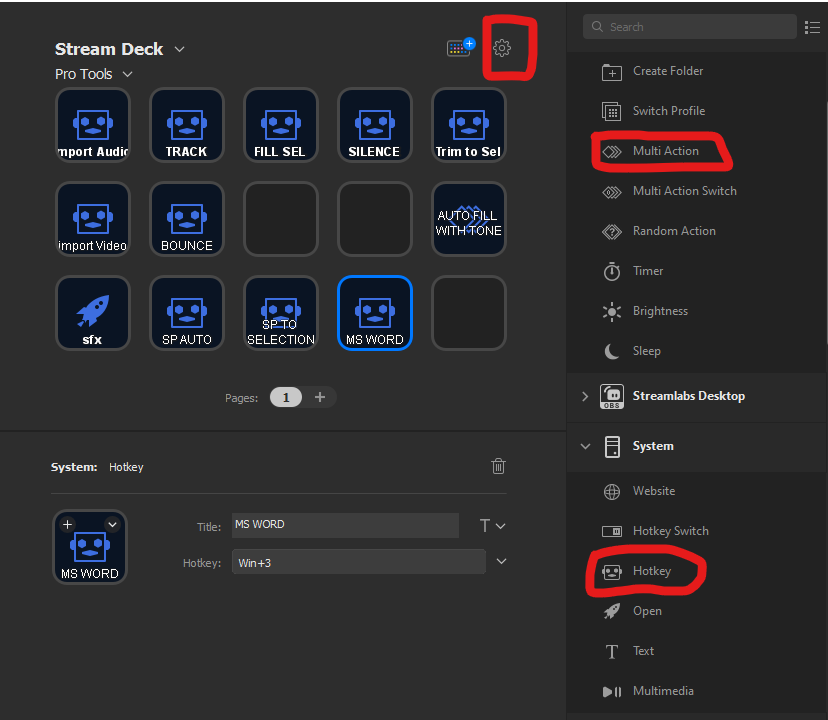
For multi-action commands (a series of different Stream Deck functions or hotkeys in succession), drag and drop Mult-Action from the side to an open button. You’ll see a blank window to drag and drop the hotkey from the side menu and assign said hotkey. The order in which the hotkeys will be executed is from top to bottom.
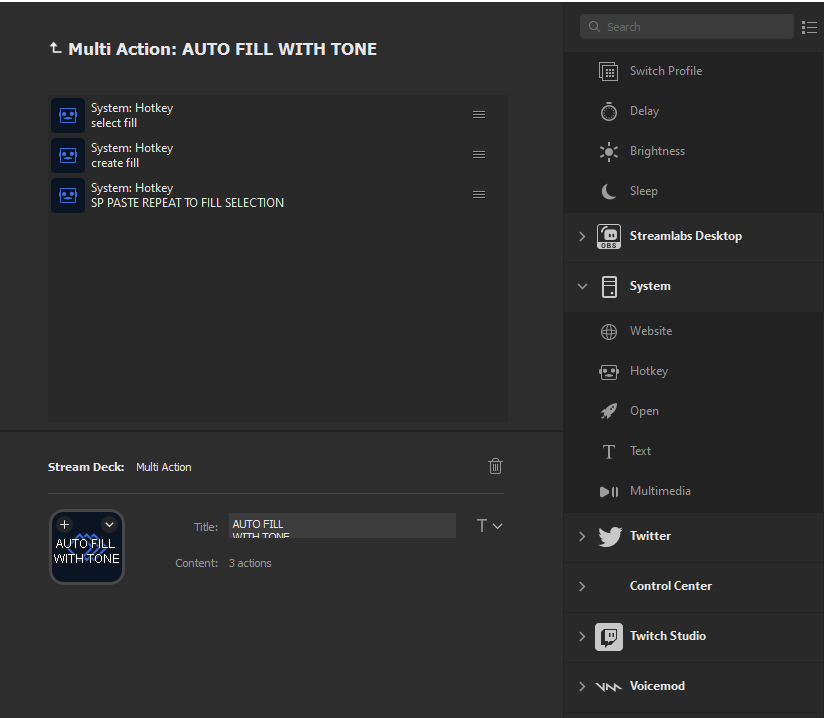
Common Examples of Using a Stream Deck for Podcasts
Here are some use cases you might be familiar with, and how using a Stream Deck can help.
Fixing & Repairing Audio
Sometimes we run into recordings that don’t have healthy recording levels. Before you start editing, you may want to do a little pre-edit prep so that you can hear any issues that may need some manual editing. If the audio is too quiet, you will likely miss issues that require manual fixing but will be prevalent in the final mix.
I will use Audacity for these examples since it’s easy for anyone to access, but these can be applied to any DAW.
One idea for optimizing your time in the prep stage is to program the Stream Deck to Select-all-tracks, then Loudness Normalization, then High-Pass Filter and Clip Fix.
For Audacity, there are some functions such as Loudness Normalization and Clip fix that need to be assigned first to a hot key of your choice, and can then be inputted into a Stream Deck.
This four-series of hotkeys into a one-button press on a Stream Deck will boost your audio to a more comfortable listening level. It’ll also remove unnecessary “rumble” in the lower frequencies, and repair clipping as a “blanket” fix start point. You will most likely need to make finer repairs later on, but it’s a great start.
Juggling Software & Windows
Sometimes we have multiple windows open, but we don’t always need to see every window simultaneously. A computer’s operating system does have a built-in hotkey to toggle these, but sometimes flipping through multiple windows is a time sink.
With the Stream Deck, you can program one of the buttons to maximize and minimize a specific software.
For example, if you use Microsoft Word to follow a script or notes and pin Word to the taskbar, you can re-create this trick in the Stream Deck. Say you pin Word, and it shows up as the second icon. If you program Win+2, it should maximize and minimize Word using that assigned button. You can do this for any software or a browser that you may use in your workflow but don’t necessarily want left open on the screen all the time.
Keyboard Shortcuts
There is a programmable function called a Hotkey Switch. Like a light switch, it’s either “On” or “Off”. A handy practical application would be copy/paste, or cut/paste. The first button click would execute the copy command, and the same button would execute paste in the next press.
Think of commands you always use back to back, and this will give you some initial ideas to lessen your hand movements!
Stream Deck for Podcasters: Conclusion
Yes, I am a Stream Deck user for my audio work. When I made the switch, I was shocked to realize how many micro-movements I used. Between executing hotkey commands with mouse movements, this added so much time lost. Not to mention sore wrists when repeating it for hours on end!
You can get pretty complex by stringing together hotkey commands based on what you’re trying to accomplish. The great thing about the Stream Deck is that it’s so customizable that the experimentation can seem endless. Or, at the very least, the customization allows the Stream Deck functionality to evolve with you and your DAW use!
By speeding up your workflow and lessening the time it takes to work on a podcast, you run less risk of giving yourself RSI. But, most importantly, always remember to get up and stretch regularly!
